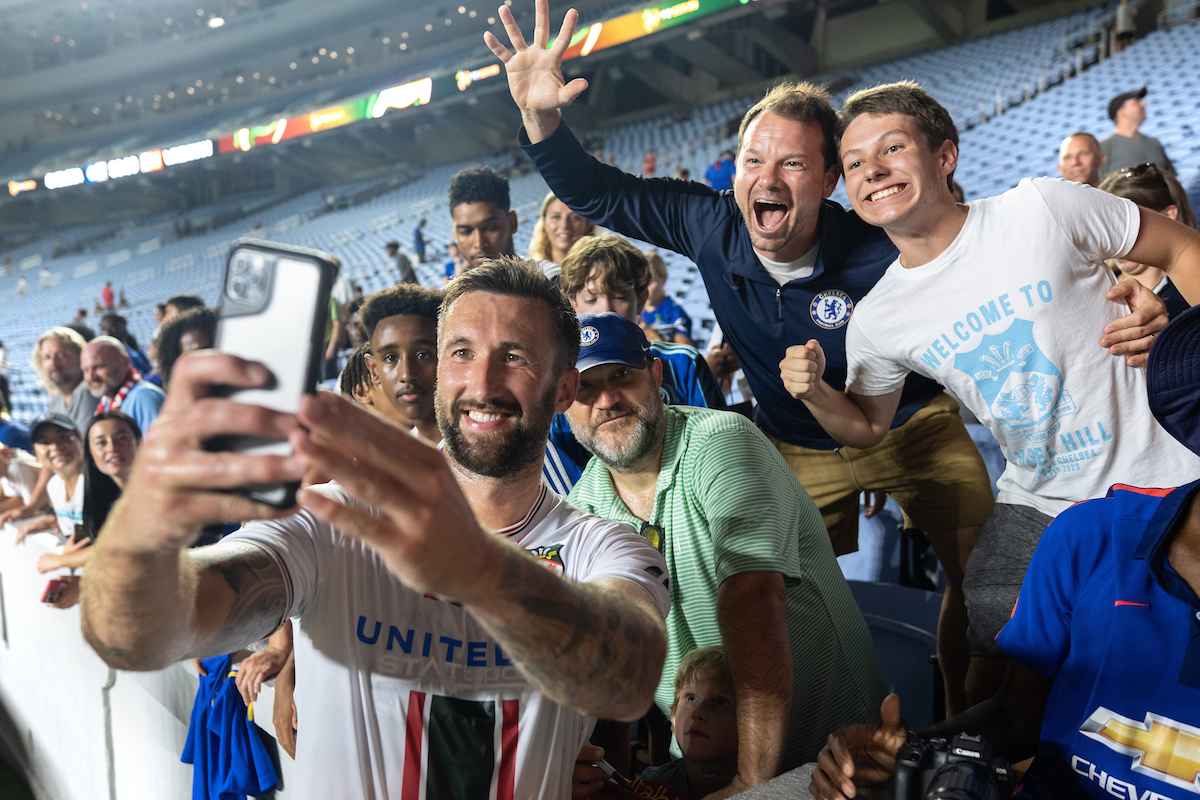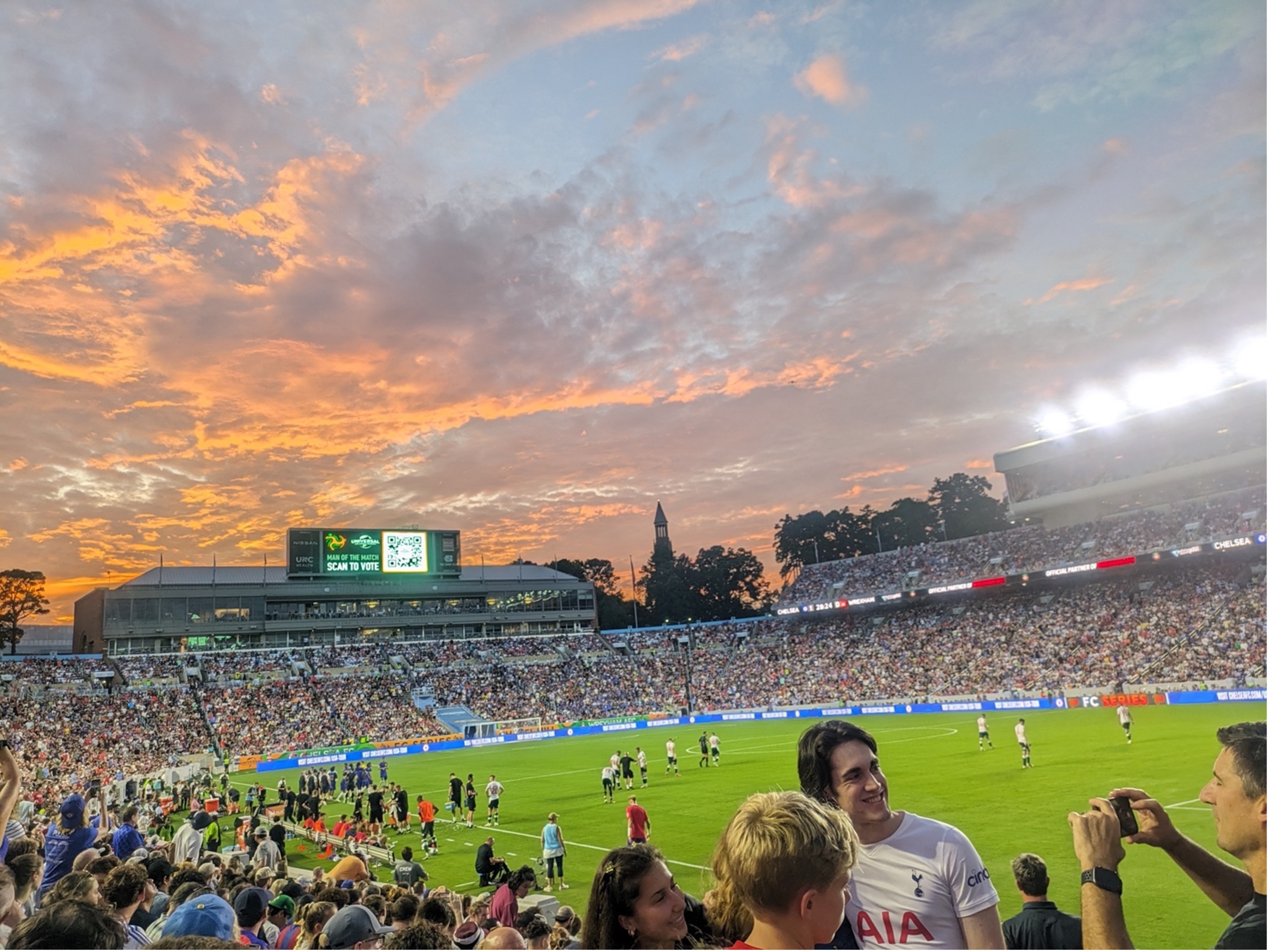ITS Network Deployment staffer Mary Wezyk, a soccer fan, had already purchased her tickets for the July 19 international soccer match between Chelsea and Wrexham at Kenan Stadium. Then she was called upon, along with other ITS employees, to play a role in getting tech ready for the big contest.
The historic exhibition match, which sold out in 11 days and drew more than 50,000 fans, required new and beefed-up technology — some things were installed just for the day and other equipment will remain. To host the big event and serve the needs of the event producers, the University enlisted ITS to tackle a variety of work. Additional or stronger telecom connections were necessary for stadium lights, coaches’ communications, video production and even medical equipment and personnel.

Supplied high bandwidth for video production
The video production folks needed their rig outside the stadium to plug into a high-speed link to the internet. They asked for 3 gigabits. Such high-speed requests aren’t that common — a 1-gigabit link is more typical. The higher requests are usually just for games with lots of media coverage and big out-of-town video production groups.
ITS ended up providing the production crew with 10 gigabits. Chad Ray’s ITS Transport Operations team, ITS Network Deployment’s Will Allen and Wezyk teamed up on that in coordination with ITS Engineering.
Using special network monitoring tools, Wezyk and Allen tested and verified that the network throughput and the link were good.

The soccer match organizers “wanted to verify the connection would provide them the speed they needed so we did a throughput test from Kenan Stadium back to ITS Manning to confirm,” Allen said. “We were able to get 9 gigabits per second during our testing. Testing 10-gigabit connections can be a little difficult since most devices only have a 1-gigabit port and even a lot of 10G devices can’t sustain 10-gigabit traffic. We have two network testers that we can use for this; we connected one at Kenan Stadium to the switch Mary installed and one at ITS Manning and did the test between the two devices.”
After the soccer match, Wezyk removed the 10-gigabit switch.
Over at the Kenan Football Center, which is undergoing renovation and expansion, Wezyk set up wireless connectivity for an X-ray machine in case that facility was called into action during the game.
Added fiber-optic cables
All this extra connectivity for the soccer match required the ITS Transport Operations team to pull a lot of fiber. Transport Operations “installed new fiber from the truck bay to the main telecom room in Loudermilk (Center for Excellence) to get that link back to Manning,” said Ray, the unit’s manager. “We also installed fiber from the north side roof to the southside telecom closet for the new stadium lights. At the same time, we added new fiber for the coaches’ communications devices from both field sidelines, replacing the old copper connections. The lights and communication connections will also be used during the football season.”
On game night, Transport Operations technicians Kevin Wicker and Danny Maddox worked an extra eight hours to support event organizers’ needs.
Multiple ITS groups coordinated
Staffers from the ITS Engineering unit and the ITS Warehouse also contributed to the efforts. In all, four ITS groups coordinated to boost connectivity for the sporting event.
Working on campus, one knows how many people it takes to give someone a good education or orchestrate a big sporting event. It was “a bit of a thrill,” Wezyk said, to know that she played a small part in the international soccer match.
